by Lauren A. Jenkins, Partner at Offit Kurman, P.A.
The pandemic era is sometimes referred to as “The Great Resignation” because of the large number of people who have exited the workforce in the last couple of years. Some are referring to this period as the Great Retirement, considering that, as Goldman Sachs estimated, more than half of the people leaving the workforce were over the age of 55.
While certainly the shrinking workforce can present unique challenges for the economy, there may be a silver lining for charitable giving. More retirement means more money in motion, from 401(k)s rolling over into IRAs, to retirees being motivated to ensure that their financial and estate plans are in good shape. In any case, there’s opportunity and the ability to fund a client’s charitable priorities.
With all this in mind, it’s a great time to review the various ways your clients can gift retirement assets to charitable organizations, to not only maximize their tax benefits, but to also support the causes they are passionate about. Here’s a quick checklist:
- Cashing out. Of course, a client can always contribute retirement assets (IRAs, 401(k)s and 403(b)s) by simply cashing them out and paying the income tax, and then donating the rest to charity. In most cases, this is not a good tax strategy because the client is paying the income tax.
- Lifetime gifts. The Internal Revenue Code contains special provisions for “Qualified Charitable Distributions” that may allow your client who is over 70.5 years old to give up to $100,000 from an IRA directly to a charity (with some exclusions, such as donor advised funds) and avoid paying income taxes on the distribution.
- Gifts upon death. Frequently, clients who donate to charitable organizations on an annual basis have not considered including charitable gifts as part of their estate plan. When your client designates a charitable organization, such as a fund at the Community Foundation or another 501c3 charitable organization, as the beneficiary of the client’s retirement plans, the client can potentially reap huge tax rewards in terms of avoiding estate taxes and income taxes attributable to the retirement assets. If the client is charitably inclined, retirement plans are one of the best asset classes to leave to charitable organizations because unlike our loved ones, charitable organizations are not subject to income tax. Estate planning with a charitable component is also a great avenue for clients to leave a legacy of philanthropy behind for themselves and their families.
- Avoid “gotchas.” Remember that some clients may not stay retired. Going back into the workforce presents unique challenges, such as the tax implications of “rehiring” and its impact on Qualified Charitable Distributions and taxable income.

Lauren A. Jenkins is a Partner at Offit Kurman, P.A.


 Questions?
Questions?




